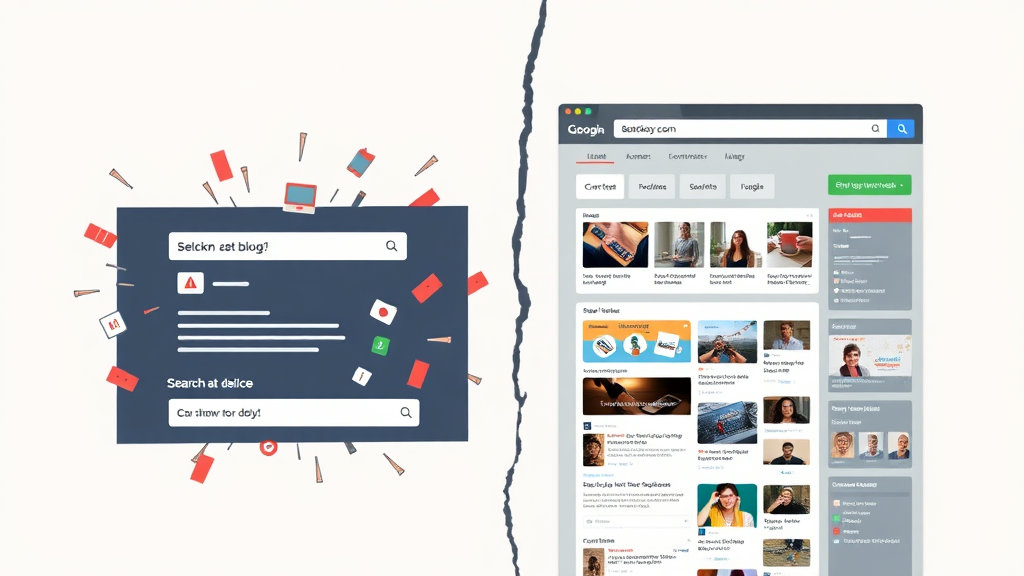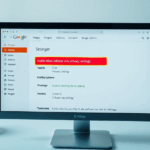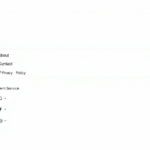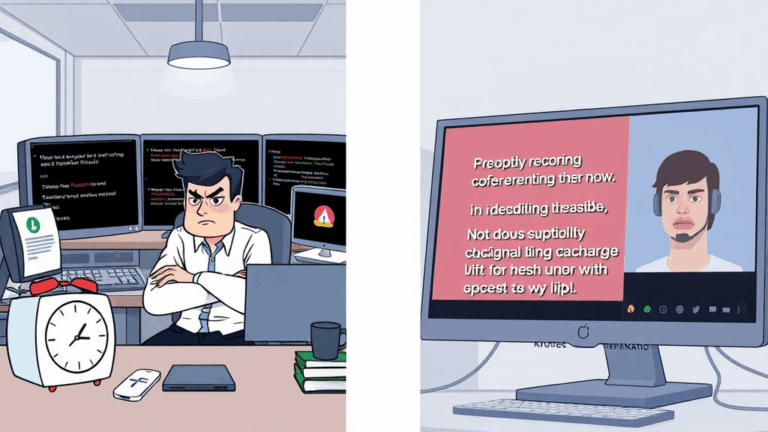Where Blogger’s Advanced Search Breaks (and What Actually Works)
Why Blogger’s Internal Search Filters Feel Like a Troll
Blogger’s search features give off strong 2008 energy. Especially if you’re trying to do advanced queries (like excluding tags, or finding posts with a specific label AND keyword). I’d love to say there’s a hidden UI for this — there isn’t. The backend search logic is pretty dumbed down unless you start editing queries manually in the URL or abusing label filtering.
I once tried to isolate posts containing “AdSense” on my blog that were also tagged with “debug hacks” and excluded from the year 2022. You’d think this would be trivial. Nope. Blogger doesn’t natively support boolean AND/NOT searches inside its internal search bar. You can kind of hack it with combinations like:
https://yourblog.blogspot.com/search/label/debug%20hacks?q=adsense
But that still returns all label-matching posts, and the keyword match gets inconsistent. Keyword matching happens somewhere after label filtering — it doesn’t combine both with precedence, which means you can’t truly filter down like a search engine would.
Why Custom Search Boxes Are Mostly Lies
Every time I’ve followed a “how to add advanced Blogger search to your template” post, what I’m really doing is embedding a Google Custom Search Engine (CSE) component. It looks like real integration, but it’s just a skinned iframe scraping your public site via Google Search’s own indexes. So, if you just posted something? It won’t show up. Delays depend on whether the blog is crawl-prioritized.
Even worse: once, I heavily updated my Blogger layout using one of those fancy Material-slick templates and the embedded CSE box stopped loading results. The iframe still loaded, but input handling broke — turned out to be a z-index interaction between the CSE branding div and the parent container animation logic. No errors, just ghost silence.
Javascript-Injection Tricks That Still Work (Sort Of)
If you absolutely must support AND-style searches on Blogger without relying on label stacking, you can cheat a little using JavaScript to filter the results after the page loads. I built a snippet that attaches to the Blogger search results container, and then uses regex to re-filter the content based on AND/OR logic between keywords. Did I feel dirty doing it? Sure. But it actually helped users find the right post in my 400-article mess.
// basic example inside an HTML widget
setTimeout(() => {
const terms = ["adsense", "cache"];
const results = document.querySelectorAll(".post-title");
results.forEach(el => {
const text = el.textContent.toLowerCase();
if (!terms.every(word => text.includes(word))) {
el.parentElement.style.display = "none";
}
});
}, 600);Won’t work outside templated search result pages, obviously. But it’s one of the few ways I’ve made advanced keyword filtering usable for non-tech readers.
Google Search Console’s Role in Pseudo-Search Accuracy
This surprised me: modifying your blog’s sitemap isn’t just SEO-relevant, it also affects Blogger’s embedded search fidelity when using CSE. Apparently, Google Search uses your submitted sitemap to prioritize crawl content — especially for “search features” like site-specific queries. So if someone uses your blog’s CSE control, it fetches from those indexed pages. If a post was never properly indexed because its label URL wasn’t in the sitemap? That post silently vanishes from search results — query returns nothing, even though it’s clearly there.
I saw this happen when I had some legacy content with gibberish in the post titles (think “test_1234_zxvb”). I didn’t realize they weren’t being indexed until I tried searching for them via the custom search widget and kept getting zero hits. Added those URLs manually into the sitemap XML via a third-party Blogger tool, waited a few days, and boom — searchable again. Definitely not intuitive.
Breaking Blogger’s URL-Based Search Loops
If you’re trying to get clever filtering working through URL hacks (e.g., chaining labels, query strings, etc), brace yourself for one major behavioral oddity. Blogger loads label filtering before keyword filtering, and treats each label as a separate query scope. So something like:
/search/label/adSense?q=debug
…won’t reliably return posts that have both “adsense” label and contain the word “debug.” Sometimes it matches, sometimes not. There’s a reason — Blogger’s query resolution pipeline rewrites label filter URL paths before it applies text search queries. That means you’re not doing true AND behavior; you’re loading the label subset, and then running a search inside that markup, which isn’t HTML-deep — it’s title-snippet shallow.
Testing this against longer posts shows even worse behavior. I had a 5,000-word AdSense post that definitely had “debug” midway down. But using label&q against it? Didn’t show up. Guess what? Blogger doesn’t index entire post content for search — just headlines and a certain character threshold from the excerpt. That post wasn’t searchable unless the keyword appeared in the first 200-ish words.
7 Search Field Tweaks That Don’t Break the Theme
- Use a transparent background on custom search boxes to avoid iframe clashes with blog templates.
- Set
cx=keys statically instead of loading them via JS injection. - Enable autocomplete only on desktop; on mobile it’ll conflict with virtual keyboards.
- Use
resultsOnly=truein CSE to embed results inline instead of redirecting. - Append
site:yourblog.blogspot.comin fallback text searches to catch missing posts. - Pad your recent posts with a short keyword-synopsis paragraph to boost match chance.
- Don’t use underscores in post URLs: Blogger’s indexing logic tokenizes them poorly.
This isn’t perfect, but it stabilizes most of the comically broken search field behaviors across major template packs. Particularly anything using smooth-scroll or parallax containers.
One Wild Label Bug I Still Haven’t Seen Documented
Okay, this one messed me up way longer than I’d like to admit. If you apply a label like “SEO-Testing” to a post, and then later decide to rename it to “SEO_testing”, Blogger won’t cleanly remap the label index unless no other posts are still using the old label.
That means if one archived post from 2017 still carries the original “SEO-Testing” label — even if it’s hidden — your label page will keep serving the old list, orphaning the newly tagged ones. I ended up thinking multiple posts were deleted or mislabelled until I cleared all use of the old label and forced it to rebuild.
Also: Blogger lowercases and URL-escapes these labels, so any deviation (like capitalized hyphens) will generate separate search indexes. Fun fact — the bug doesn’t trip if all labels are created via the post editor interface. It only happens when label tags are injected via the feed API. Which I was doing — badly — with a Google Apps Script that populated legacy posts in bulk. Now I only edit labels manually.
Regex Workarounds in CSE JSON API Mode
This is one I only started appreciating recently. If you set up CSE using the JSON result API instead of embedding the default widget, you can apply your own logic on the returned dataset, including filtering titles or snippets with RegEx. Not real-time fast, but more consistent than relying on Blogger’s built-in matching engine.
I used it to strip out AdSense setup guides that were no longer relevant (e.g., anything referencing pre-Feb 2022 tag formats). Here’s the rough logic:
fetch(`https://www.googleapis.com/customsearch/v1?q=adsense+setup&key=YOUR_KEY&cx=YOUR_CX`)
.then(res => res.json())
.then(json => json.items.filter(item => !/2021|legacy/.test(item.snippet || "")))Also lets you trim duplicate snippets from auto-content-extracted summaries. Good if you publish a lot of tag-roundup posts and want to filter them from real tutorials in search results.
Only catch: Google throttles the API hard. If you query it more than a few dozen times an hour, you’ll hit usage limits — even if it’s your own blog. Definitely cache results locally if you go down this route.














